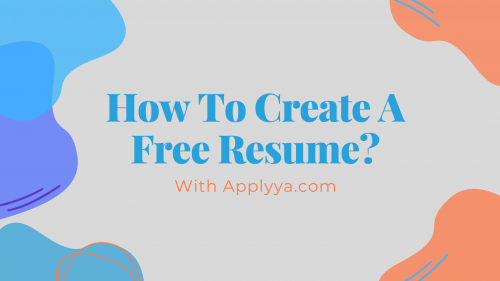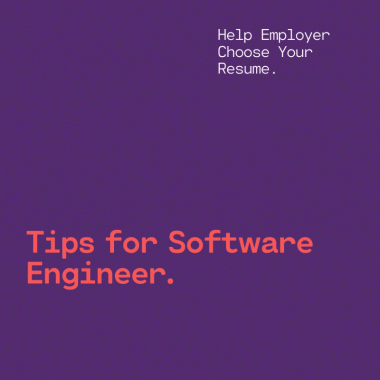
How to structure a resume and get noticed?
Getting a job is much harder in today’s competitive market. Some of the reasons for such competitiveness hide in the fact many companies now hire remotely, which broadens up their talent pool.
That’s why having a well-crafted CV that will capture the recruiter’s attention is so important.
Structuring a resume is a significant step during a job hunt process because it helps candidates stand out from the crowd and get noticed by hiring managers.
That’s why we decided to provide you with a few useful tips on how to structure a resume, to attract the hiring manager’s attention.
Three main types of resume.
Before we give you the tips on how a proper resume structure should look like, we should briefly explain three different resume types you can choose from. Those are:
- Chronological resume.
- Functional resume.
- Combined resume.
Chronological resume type:
A chronological type of resume means we’re putting our experiences and achievements chronologically, as they happened. A chronological resume is the most frequent one and the ideal choice for candidates who have a consistent and growing career path. Usually, a chronological resume includes information in the following order:
- Contact information
- A brief summary
- Professional experience
- Skills
- Education
Functional resume type
The functional type of resume will focus more on relevant skills each candidate possess, rather than their work history. The main goal of a functional resume is to show candidates’ skillset and usually includes information in the following order:
- Contact information
- A brief summary
- List of relevant skills
- Work experience
Combined resume type
A combined resume is just what its name says: a combination of a chronological and functional resume, and it emphasizes both work experience and relevant skills. A combined resume usually includes the following information:
- Contact information
- A brief summary
- Work experience
- List of most relevant skills
- Education
A functional and combined type of resume is the best choice for candidates who have some gaps between jobs, as well as for the ones with varied work experience.
Tips on how to structure your resume properly.
Knowing how a professional resume structure looks like will help us craft a professional-looking and easily readable document. And if we know how fast HR managers skim through our CV‘s, we understand how essential it is to have a great-looking CV.
Luckily, we don’t have to break our heads too much to get a perfect resume. Plenty of online CV builders such as Applyya have pre-made templates to follow, which significantly decrease the time spent on CV making. However, there are a few things to be cautious about:
- Selecting a professional-looking and readable font. When making a CV, we might be tempted to choose the fanciest font out there in our desire to impress the interviewers. However, this won’t help us avoid the recruiter’s wastebasket. Instead, we should ensure that our font is readable and common enough to go through the recruiter’s ATS systems. Some best CV fonts include Calibri, Helvetica, Georgia, or Corbel.
- Selecting a proper font size. Another factor that plays a significant role in how our CV will be perceived is font size. Usually, you should choose something between 10 and 12 points on your CV. If you’re trying to reduce white space on your CV, then you should go for a 12 points size font. However, if you have trouble with the lack of space, you shouldn’t go below 10 points in font size. Instead, try prioritizing experiences and delete what’s not essential.
- Include section headers. Section headers are super important because they help recruiters spot the most important parts of your CV. You can style your section headers by using a “bold” font, increasing the size of your font, or underlining your section headers. Overall, it should look clean and professional – not tacky or “overdone.”
- Use bullet points. Bullet points are a pretty valuable part of every CV because they enable recruiters to see your core values and skills as an employee. Further, they can come in handy if you use keywords while crafting a CV and improve your chances of scoring an interview.
- Consider how you want to make your CV. If you browse Google looking for the ways to make a CV, there will be plenty of solutions ranging from using Photoshop, PowerPoint, or Word to do it. However, this can take a lot of your precious time you could be spending on finding the right job.
Usually, the most commonly used CV format among recruiters is PDF. Luckily, Applyya offers you the possibility to find resume structure examples and craft your CV free and save it as PDF. Easy as that!
- Sick to single line spacing. If you feel like you don’t have enough space to put all your achievements, don’t try to jam everything. It will look untidy and unprofessional. Decide what is the most important for each role you apply for and stick to single line spacing.
A brief recap
A job search can be a daunting experience, and candidates should armour themselves with patience before they start applying. Luckily, these tips will set them on the right track and help them find their dream job faster.
You May Also Like

How to Create a Free Resume with Applyya?
June 24, 2020
How to Help an Employer Choose Your Resume. Tips for Software Engineer position.
November 27, 2020

